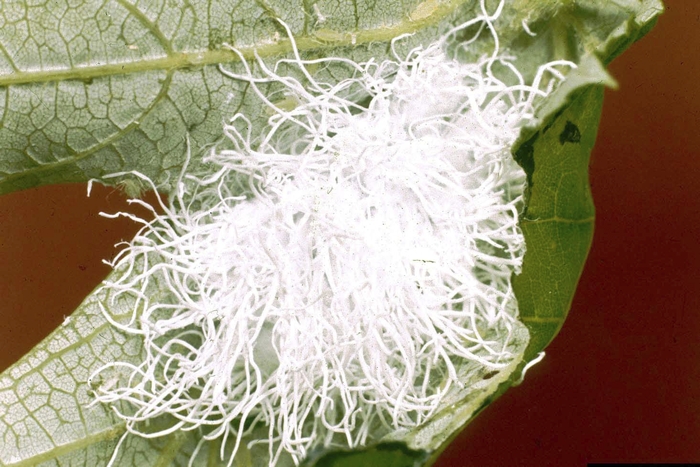Darrell Blackwelder: Woolly aphids look alarming, do little damage
Published 12:00 am Friday, June 5, 2015

- University of Georgia Woolly aphids on a silver maple leaf. The bugs are black, but secrete a fluffy, white wax to help them stay on the tree. They do little harm overall.
Silver maple and other shade trees in Rowan County are being invaded by an unusual white insect called the woolly alder aphid. The arrival of these insects has caused panic for some and a general curiosity for others throughout the county.
The aphids are black with the abdomen covered with a fluffy, white wax. This fluffy wax allows the insect to float in the air. Wooly alder aphids can be seen floating in the air like dandelion seeds. One person called and thought it was floating ashes from burning leaves.
One interesting fact about the insect is it needs an alternate host of silver maple and alder (trees related or in the birch family) to complete its life cycle.
The insect is easily recognized by the presence of large, fuzzy, white colonies on the foliage, twigs and bark of mostly silver maple trees. Their alarming presence is more of a nuisance than a detriment to the tree. The insect causes little damage to the host tree.
Unfortunately, woolly aphids suck plant juices and secrete a tremendous amount of honeydew. Honeydew is a sticky, sweet substance that drops on cars, sidewalks and drives, creating an unpleasant surface. Dark, sooty molds grow on the honeydew, disfiguring plants and turf below the tree. The sweet honeydew will almost certainly attract ants, bees and other flying insects, compounding this problem.
Wooly aphids over-winter in the cracks and crevices of tree bark. The immature aphids, called nymphs, feed on the underside of silver maple leaves in early spring.
All over-wintering aphids are female, which leads to live birth, producing very large colonies. The offspring then develop wings later in May through July. The winged adults then fly to alder trees. Alder (birch) trees are indigenous to the Piedmont, growing near creeks or streams. Once these insects reach alders, the aphids feed and reproduce completing their life cycle.
Chemical control of these insects is generally not practical because of excessive treatment costs. Silver maple and other trees infested by the insect are not severely damaged by woolly alder aphid infestations.
Smaller trees may be sprayed to reduce the population. To initiate control, spray pockets of aphids thoroughly at first arrival with an insecticide labeled for ornamental trees. It is most likely the trees will require two applications, 10 days apart, for adequate control.
The woolly aphid population depends upon many factors including climate, hosts and natural predators. Natural predators usually keep the aphids under control, however, when one of these are out of balance, there will be an increase in populations. Go to http://www.ces.ncsu.edu/depts/ent/notes/O&T/trees/note06/note06.html for more detailed information about woolly alder aphids.
Darrell Blackwelder is the County Extension Director with horticulture responsibilities with the North Carolina Cooperative Extension Service in Rowan County. Learn more about Cooperative Extension events and activities by calling 704-216-8970, Facebook or online at www.rowanextension.com




